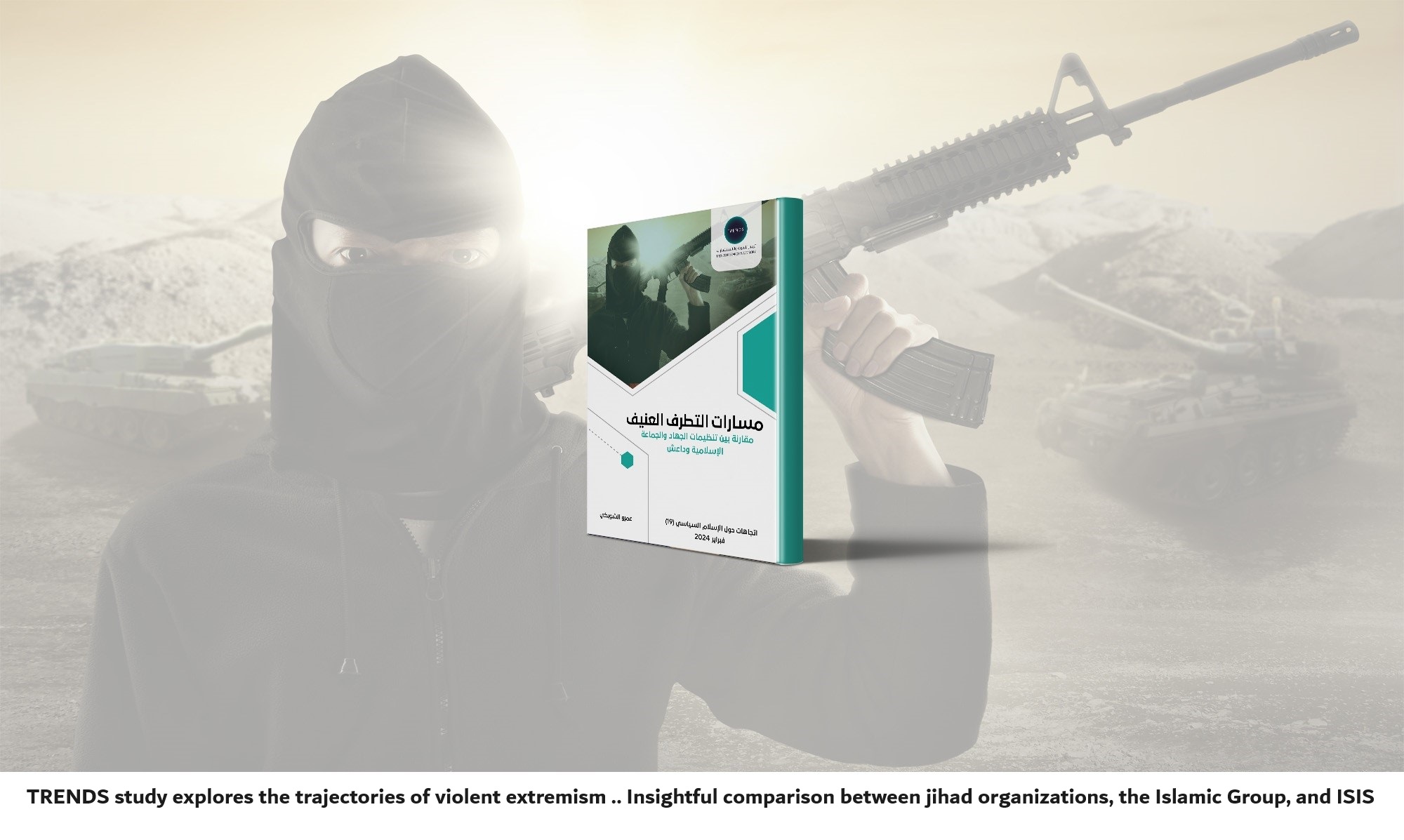TRENDS Research and Advisory has just released issue number (19) of its series on political Islam entitled: “Trajectories of Violent Extremism: A Comparison between Jihad organizations, the Islamic Group, and ISIS.” The study provided a comparative analysis of the trajectories of violent extremism, highlights the changes that have evolved in the nature of Jihadist organizations, ideas, and factors leading to extremism. It addressed the differences between the “old violence” represented by the “jihad” and “Islamic Group” and the “new violence” represented by ISIS.
The study, conducted by Dr. Amr Al-Shobaki, a researcher specializing in the field of political Islam movements, identified two issues as the main reason for the difference between the “old violence” and “new violence” brands, namely in the organizational structure. The “old violence” organizations were characterized by the presence of a tight organizational structure established in a local (national) setting, while the “new violence” organizations lack a strong organizational structure, and spread on a flexible global scale.
The second issue is the ideological construction. The “old violence” organizations relied on a strong and deep ideological structure, based on extensive jurisprudential literature, while the “new violence” organizations relied on certain documents that are not deep in jurisprudence and ideological references.
The study added that new appealing factors have been introduced in the recruitment of the membership of the “new violence” brand, such as revenge, marginalization, financial networks and other non-religious factors that were present in the past, but have become essential.
The study showed that the strength of the organizational structure of the groups of the end of the last century made them managed centrally through leaders known as “princes” who directly recruited new elements, while the “new violence” organizations rely on online recruitment and social media platforms.
The study pointed out that radical jurisprudential interpretations are not devoid of depth. They were derived from the writings of Ibn Taymiyyah, Sayyid Qutb, Omar Abdul Rahman, Sayyid Imam al-Sharif and others. These references played a major role in shaping the ideas of the elements of the “old violence” organizations, while the “new violence” organizations rely on a simplified discourse that focused on invoking emotional feelings and effective images.



